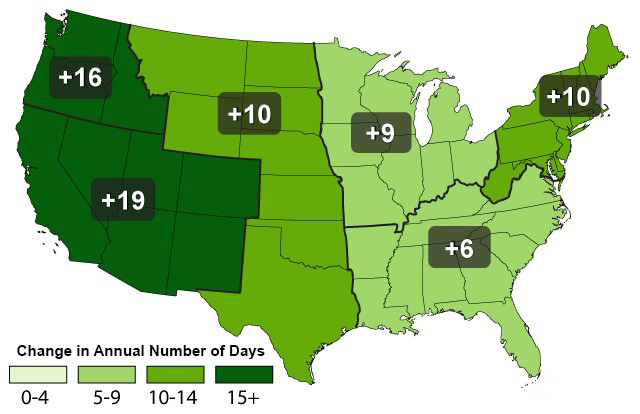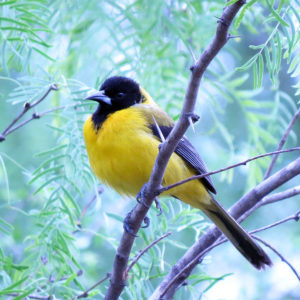By George Harvey
Are you ready to watch the scariest movie plot ever produced play out? This one is especially scary because it is in full 3-D, accompanied by surround sound and real sensations ranging from the smells to the physical pains. It promises to give you a direct understanding of a wide variety of real, physical problems ranging from the fatigue of chronically wilting heat to disabling hunger and disease. But perhaps the scariest part of the show is that it will go on – whether you are prepared for it or not.
The good news is that we can, if we are lucky and act fast enough, prevent the worst scenes from the show from being acted out. The bad news is that we are not coming even close to doing that. In fact, we, as a society, are acting almost as though we want to see how bad it can get. We are acting as though we want to see “Mad Max” turn to reality.
This is the vision of the future in an article by David Wallace-Wells, “The Uninhabitable Earth” (UE) published in New York magazine (http://bit.ly/Uninhabitable-Earth). With that article came quite a lot of debate.
Certainly, some climate scientists reacted negatively to it, saying it was merely hyperbolic. The Australian website news.co.au had a post (http://bit.ly/uninhabitable-backlash) that said, “Mr Wallace-Wells’ piece has been heavily criticized. But not by the climate skeptics – it’s climate scientists who are up in arms, claiming it is ‘irresponsible’ and ‘alarmist.’” Nevertheless, the same article went on to quote one scientist who said, “It’s absolutely true these things could happen. … It’s alarming but not alarmist.”
There is a scientific view that agrees with UE, however. One place it is expressed is an article in Slate (http://bit.ly/not-alarmed-enough). It projected a truly dire future, saying, “New York Magazine’s global-warming horror story isn’t too scary. It’s not scary enough.”
Of course, the question is what to believe. Perhaps the first thing is to look at the claims in the original article.
We should start by noting that the overwhelming majority of climate and weather scientists agree not only that climate change is happening, but that it will continue for decades after we stop emitting carbon dioxide. While they disagree on how many decades, estimates range from over two to over ten. So as bad as things are getting (on which, more later) they will continue to get worse for over twenty years from the time we stop burning fossil fuels. That will be twenty to over a hundred years of damage we cannot prevent and do not know how to undo.
One thing that the UE points out, and this is quite certainly true, is that while the Earth has warmed and cooled many times before, the highest temperature ranges on the planet are already high enough to kill people. Since climate change is expected to increase the areas subjected to such heat, the numbers of people at risk will probably increase dramatically. How dramatically? Possibly climate change will put half of all people at risk of death from heat alone. UE says this:
“Since 1980, the planet has experienced a 50-fold increase in the number of places experiencing dangerous or extreme heat; a bigger increase is to come. The five warmest summers in Europe since 1500 have all occurred since 2002, and soon, the [Intergovernmental Panel on Climate Change] warns, simply being outdoors that time of year will be unhealthy for much of the globe.”
The current age is referred to as the “sixth extinction” or “Anthropocene extinction.” Though it is driven in part by a broad range of things, its greatest impulse comes from pollution in general and specifically greenhouse gas pollution driving climate change.
This extinction is already far worse than most people realize. The Royal Society for the Protection of Birds did a study that found a 70% decline in seabird populations had already taken place over a sixty year period. The World Wildlife Fund (WWF) did a study of all wildlife, worldwide, and found that the populations had already declined by 60% over the last forty years.
I called the WWF on their study, because I wanted to know what types of species they were evaluating as wildlife. I was told it was all vertebrates; so 60% of all fish, amphibians, reptiles, birds, and mammals that we had forty years ago are gone. I also asked about numbers they had provided on extinction of species, and a scientist told me that we are losing another species about every ten minutes.
UE has this to say about extinction events, with a special mention of the Permian-Triassic extinction event, to which it compares the present age:
“The most notorious was 252 million years ago; it began when carbon warmed the planet by five degrees, accelerated when that warming triggered the release of methane in the Arctic, and ended with 97 percent of all life on Earth dead.”
If the author is correct that we are headed toward a similar extinction, and many scientists believe he is, we could be facing the loss of a wide array of animals we prize. They include not only the American bald Eagle and Baltimore oriole, which the Audubon Society has long warned could be put at risk, but just about any other species you might want to see survive, including human beings. Yes, it is even our own survival that is at stake.
There are scientists who say the age we are in will not be so devastating as the Permian-Triassic event. On the other hand, the change in temperature that we are experiencing is many times as fast as the one that precipitated that event.
The UE article said, “The mass extinction we are now living through has only just begun; so much more dying is coming.” Perhaps we should look at where we are, though as we do, we should understand that nearly all scientists agree that things will almost certainly get worse. These are things that we can see, but which the UE article did not focus on.

Regional average length of frost-free season for 1991-2012 compared to 1900-1960. Adapted from Melillo et al. (2014), Climate Change Impacts in the United States.
One of the most interesting evidences of climate change is a map produced by the Environmental Protection Agency showing changes in the lengths of growing seasons in the last 120 years. With the exceptions of six states in the Southeast, every state has a longer growing season by ten to forty days. In New England and New York, the growing season was ten days longer in 2012 than it was in 1991. Its length has continued to increase.
That might seem like good news. But, as the growing season has lengthened, so have the active seasons of pests, including disease vectors. Two such vectors are white-footed mice and deer ticks which carry Lyme disease, babesiosis, and other diseases. The Center for Disease Control did a study of 100 ticks found in New Jersey and found 55% were carrying at least one disease. Mosquitoes are also important vectors that are already bringing other diseases to regions of the Northeast.
Vermont is reporting hundreds of new cases of Lyme disease each year, with an estimate that only 10% are reported. There are also regular reports of eastern equine encephalitis and West Nile virus. None of these was being reported only thirty years ago, and all appear to be impelled by climate change.
Moose, whose ranges never had ticks in it and who never had a reason to develop an instinct to groom for them, are now being bled to death by tick infestations. The WWF is worried that moose might be extirpated, rendered locally extinct, in Vermont.
It is not just animals, but also plants that are at risk. A set of infestations of insects, fungi, viruses, and other pathogens put nearly all of the Northeast’s favorite species habitats at risk, with pressure on nearly all species we see in the woods now, including all of those that give us fall colors. The Vermont Agency of Natural Resources has proposed identifying refugia for some habitats. In the case of mountain ridgelines, this would entail identifying mountains high enough that climate change will not soon push upland species off as deciduous woods encroach on them, in the hope that someday we can set things straight again.
The damage that is being done by climate change is already happening. It is costing people in our country a great deal of money. Flood insurance costs have risen about seven times as fast as we would expect, unless we factor in climate change. Droughts, tornadoes, hurricanes, other wind storms, ice storms (which can, in fact, be caused by climate change), and wild fires, are all costing more at extraordinary rates each year.
How bad can it be? Some scientists’ warnings go far beyond having to spend billions of dollars protecting coastal cities. The last time the Earth was four degrees warmer than it is, ocean levels were hundreds of feet higher than they are. At that rate, not only would Miami be lost, but so would the rest of Florida and so would nearly all coastal cities. Even many inland cities would be untenable. Agricultural regions would be useless for their current crops.
The good news is that we have every resource we need to replace fossil fuels with more environmentally-friendly sources of power, stopping climate change. The good news includes the fact that if we do so, it will save human lives that are being lost to outdoor pollution about every ten seconds. But in order to get to the good news, we have to act. Passivity will certainly destroy us.
As pessimistic sounding as it is, even the UE article has good news. After detailing so much that can go wrong, it says:
“But climate scientists have a strange kind of faith: We will find a way to forestall radical warming, they say, because we must.”
We can supply the scary movie with an alternate plot ending. And when we see that, we are all in this together, we shall, I believe, do so.











Leave a Reply